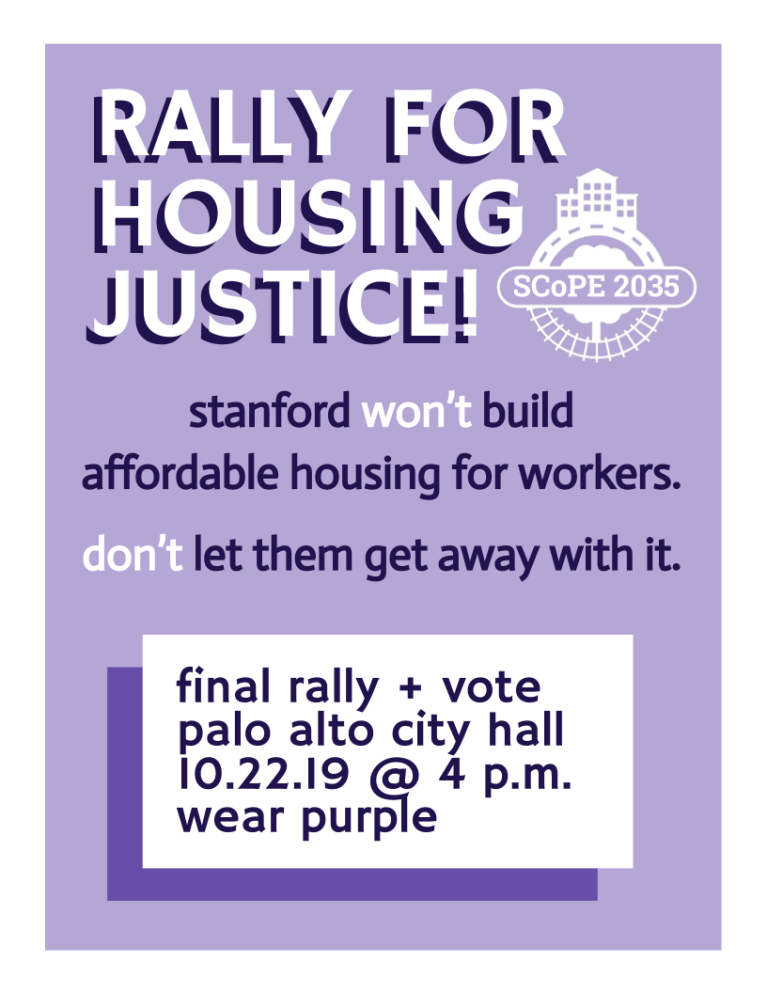In the past few months, you might have seen some paid advertising on Instagram, Twitter, Facebook, Spotify or even NPR extolling the virtues of our University and urging viewers to voice their support for Stanford’s development proposal. As the General Use Permit process draws to a close, Stanford is fighting tooth and nail to avoid the accountability measures set by Santa Clara County, instead offering a counterproposal in the form of a Development Agreement. Many of the ads Stanford runs claim that Stanford is offering “$4.7 Billion” in community benefits, instead of following Santa Clara County’s proposed accountability conditions. The subtext of the advertising is clear: Santa Clara County would be foolish not to accept Stanford’s supposedly generous offer and force the school to follow the County’s “unreasonable and burdensome” requirements instead.
Stanford is advertising a lie. The $4.7 billion in benefits is hugely inflated. The supposed benefits package includes the cost of all the faculty and student housing the University was already planning on building, in addition to existing developments like Escondido Village. In other words, Stanford includes as benefits the planned development they are trying to get approval for — the same development which is in fact a driver of the housing crisis. Let’s be clear: The mere existence and growth of this school is not inherently a community benefit. Stanford’s growth, like the growth of any business, has downsides that must be addressed. Stanford cannot in good faith claim the development it is seeking approval for as “community benefits”— the fact that our University is doing so anyways is dishonest and immoral.
After removing all the false benefits, the value of Stanford’s counterproposal amounts to $168.3 million, just 3.6% of what is being advertised, according to a County analysis sent to the Board of Supervisors by Deputy County Supervisor Sylvia Gallegos. Furthermore, Stanford’s offered development agreement actually proposes less affordable housing than what the County currently requires — 575 units in comparison to 933 units. In short, the University is running a misinformation campaign to avoid taking responsibility for its impacts.
It has been disheartening to see Stanford’s media campaign mislead so many alumni and faculty, whose emails and comments at hearings voice support for the University’s plans without realizing that the University is seeking to avoid accountability for its development impacts in its proposals. We hope to persuade students, staff, faculty and workers to instead consider the ways in which this expansion could actually cause serious harm. Stand with Stanford’s service workers to demand better from this University.
This false advertising campaign is just another example of Stanford doing everything it can to get out of providing affordable housing and supporting its workers. When Santa Clara County was considering implementing affordable housing ordinances, the president of this university suggested, on public record, that the fees Stanford would have to pay would have to come out of financial aid outlays. In other words, the president effectively threatened support for low income students to get out of paying for affordable housing. To put this in perspective, the total amount Stanford was asked to pay under the ordinances over 20 years is less than what the endowment makes in a month and a half. When those ordinances did pass, Stanford responded with a lawsuit that has since been dismissed.
What we said then is still applicable now: “[We] are baffled as to why Stanford is so opposed to housing its workers on campus that they would threaten a lawsuit to avoid having to do so. As Stanford complains about technical minutiae, we must remember: If Stanford wanted to provide housing for its workers the same way it does for staff and faculty, it could. Stanford is trying to paint itself as a victim and cast this debate as a matter of legality. In doing so, they intentionally restrict our vision of what is possible. Ultimately, it is a moral issue: whether Stanford, with all of its resources, decides to actively support its workers and build out a truly inclusive community for all of its members.”
We have a unique opportunity on Tuesday to push the University to expand its definition of community. One of the final hearings on Stanford’s General Use Permit is happening at Palo Alto City Hall at 6 p.m., and we’re calling on everyone to show up for our rally at 4 p.m. and attend the hearing afterwards.
After this permit is approved, it is locked in place for the next 20 years. What happens in the next few months will determine the future of this area. It’s time for us to decide: What kind of University are we willing to be a part of? We can choose to be a University that excludes, that consolidates power and resources for a small few within a hyper-privileged bubble. Or, we can fight for a future where access to the Stanford community isn’t predicated on privilege, income or education, where everyone who contributes to this university is truly treated as a member of the Stanford family. If you believe in a more inclusive and equitable Stanford, now is the time to take a stand.
— Amuya Yerrapotu ’20, The Stanford Coalition on Planning an Equitable 2035 (SCoPE 2035)
Learn more at our one-pager here. RSVP for the SCoPE 2035 rally here.
Contact Amulya Yerrapotu at ayerrapo ‘at’ stanford.edu.
